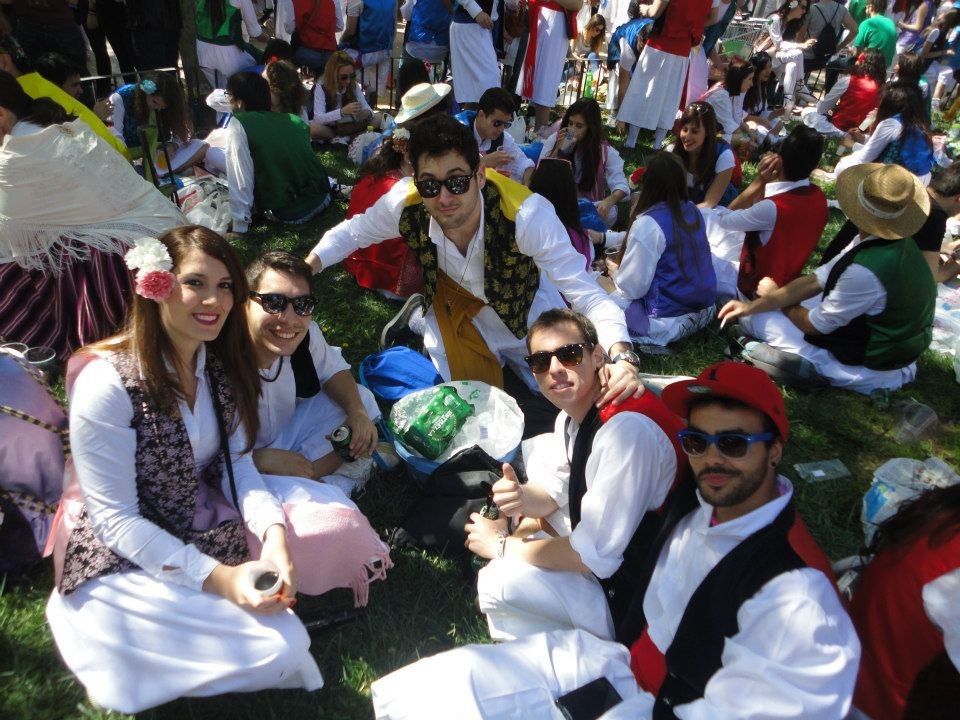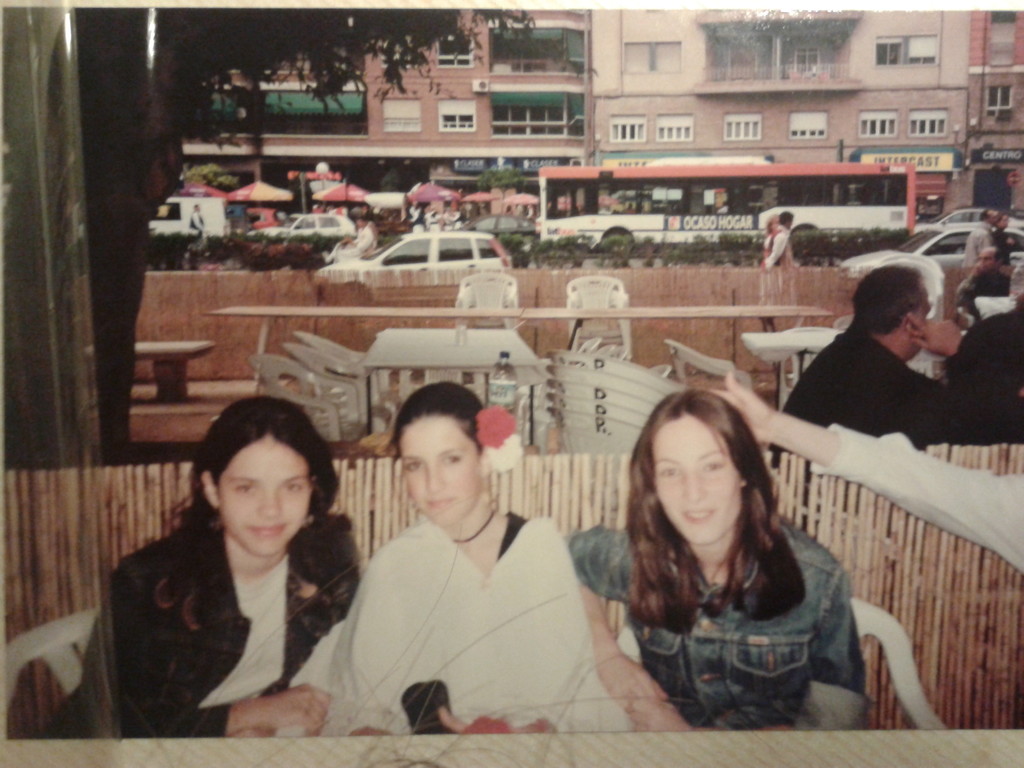El bando de la huerta
El Bando de la Huerta is the most important festival of Spring in Murcia. The Spring festivals of Murcia are always celebrated the week after Semana Santa (Easter week), and el Bando de la Huerta is celebrated on the Tuesday of this week.
I am going to tell you what El Bando de la Huerta is like, what the day means for most young peoople. I hope those of you who aren't from Murcia or who are Erasmus students, this information is useful for you and that you enjoy this party as much as possible!
The week of El Bando de la Huerta
The week of Spring festivals has two important days, El Bando de la Huerta and on the Saturday is the 'The Burial of the Sardine'. El Bando de la Huerta is a bank holiday in Murcia, but only in the capital, in fact, other people from Murcia celbrate this day on other dates in the same month. Monday is El Bando de la Huerta for children, Wednesday of the same week is the 'Flower Parade' and Thursday and Friday, is the 'Testament of the Sardine'.
El Bando de la Huerta starts with the flower offering to the Virgin of Fuensanta (the patron of Murcia) in front of the cathedral, where there is an arch of flowers; afterwards is a small procession for the Virgin of Fuensanta.
In the afternoon, there is the parade of El Bando de la Huerta. They are celebrating the vegetable gardens of the region where the owners dress up in all kinds of costumes and dance the 'jota' (Spanish dance) and give out vegetables and other typical things from the garden, as well as pastries, milk from their goats, black pudding, chorizo, beer etc... The parade passes through the most important streets in Murcia and lasts several hours, people watching can pay to sit in chairs along the streets that are installed for the day, but you can also watch it standing up. Between the two events of the day, people usually wander around the city or go for tapas with family and friends etc...
While this is happening, young people and families meet in city's parks and other areas with food and alcohol and then spend the day there (they don't usually go to mass or to the parade) until the evening which is when they go to nightclubs or pubs in the area, others return home, others stay in the park. It's a great holiday, but you have to watch how much you drink, there are some people who start at 10 or 11 am and continue until the afternoon or evening, so you can imagine what can happen.
The outfit
During El Bando de la Huerta, most Murcians wear a typical outfit for the day, it is rare to see people dressed normally. So be ashamed if you don't dress up, I think you are more likely to bring attention to yourself if you don't dress up.
The male outfit is made up of several parts: the 'zaragüeles', which are wide, flowy trousers; a white shirt; a coloured vest, either plain or with a pattern; a matching belt is worn around the waist; knee length white holey socks; and 'esparteñas' (espradilles).
There are some different styles of the outfit, but the one that I have described is the most popular. Although some young people have other traditions such as changing the 'esparteñas' for a sports or more comfortable shoe, and many girls wear the male outfit instead of the female one (out of convenience, because it is cheaper, more fashionable... )

On the other hand, the woman's outfit is much more elaborate, lots more details and also much more expensive.
- The main part of this outfit is the petticoat or skirt; it can be made of various patterns or fabrics, stripes, embroidery, reds, yellows, bright colors, black with colourful embroidery... The skirt is my favourite part of the outfit, and when you watch people dance the 'jota', it looks very beautiful in motion.
- There is also the underskirt, which is a kind of white fabric skirt put underneath the petticoat to give the outfit more shape.
- In addition to the petticoat, women wear a pinafore which matches the petticoat, but not a pinafore such as an apron, this is smaller and only covers the lower half of the body.
- Like men, they also wear socks but they are longer and the 'esparteñas' (can have a wedge).
- The upper part of the outfit consists of a shirt and a shawl that goes over. The shawl is also one of my favourite parts of the outfit, and gives the outfit a bit of a girly touch; there are different types made of various fabrics and embroidery, and the better quality and more decorated ones, represent a higher social class (although this is now more old fashioned).
- A broach is worn on the shawl to keep it in the right shape and fasten it at the front.
- Other accessories include: a cross shaped necklace which usually matches the predominant colour of the outfit, earrings and purse or a bag (there are more, but I'm not sure what they are).
- Another important part of the outfit is the hair, which is usually styled in a bun with braids and other accessories, called a "bow handle".
- To finish it off, they decorate their hair with carnations, and around the neck. Men can also wear carnations, but is usually on the waistcoat.

If you want, it is possible to buy a cheap one in Carrefour, Alcampo, etc or lend one from a colleague. It is much more fun if you wear the typical outfit!
The barracas
In the week of the Spring Festival, they install 'barracas', which are like temporary cabins where they prepare the typical Murcian food: 'zarangollo', black pudding, sausages, beans, 'paparajotes', etc. Many people go to the barracks at some point during the day, and the atmosphere is very 'huertana'. Having said this, I only recommend going to the barracas the day of the Bando de la Huerta if you have a connection there and if you have reserved a table. If not, it is not worth the hassle because it is extremely crowded thus the service and food is not very good. Some people choose to have their own barbecues with friends in parks, which is another good option.
The parks and streets where the 'twenty-somethings' tend to go are Parque de la Fama, el Malecón, Parque de la Tres Copas and la Merced.

My experience...
I have experienced many different kinds of El Bando de la Huerta; I have been dressed as a 'huertana' when I was a little girl, I have watched the whole parade, sometimes I haven't, I have been to the "botelleo" parks dressed as a huertano, as a huertana, with food, without food, I have been to the 'barracas' some years, some years I haven't... What I recommend most is to always go with your best friends, then you are sure to have a great day. This year, I couldn't go because I was in Strasbourg on Erasmus, which was harder than I thought. Being 23 years old and not being able to go, and seeing photos of your friends on social media whilst you're cold in another city always makes you nostalgic, but never mind, I will enjoy next year.
Photo gallery
Content available in other languages
- Español: Bando de la Huerta
- Polski: El Bando de la Huerta
- Deutsch: Bando de la Huerta
- Italiano: Bando de la Huerta
- Français: Le Bando de la Huerta
Rate and comment about this place!
Do you know El bando de la huerta? Share your opinion about this place.


















